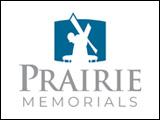Owners who plan avoid future turmoil
Your Business couldn’t be better – and then it happens: a co-owner suddenly becomes disabled or dies. That could mean the disruption of your business, your income and possibly even a comfortable retirement.
Good Business
That is why business succession planning – including a well constructed buy-sell agreement – makes good business sense, for both co-owners of a partnership or a corporation. Using a sports analogy – in any sporting event, if there’s a conflict, it’s resolved by going to the rule book. Think of a buy-sell agreement as a rule book for resolving conflicts and other issues in your business. The difference is that, in business, co-owners themselves mutually agree on how the game will be played by writing the rules in advance and in anticipation of certain events, particular needs and desires.
In agreement
Buy-sell agreements – sometimes included as part of shareholder agreements – can provide clear ‘rules’ for succession upon death or some other triggering events, and benefit the interests of all shareholders. Such an agreement can play an important role in the preservation of a business and in providing financial security for the business owners and their families. You and your co-owner(s) establish the rules by creating and entering into a buy-sell agreement that sets out firm commitments and obligations for buyer and seller and their respective heirs. A properly drafted agreement will set out provisions for triggering events, like the death or disability of a co-owner, retirement, divorce, bankruptcy of a co-owner or a falling out between co-owners.
For the fund of it
If one party dies or becomes disabled, where does the surviving/healthy co-owner(s) get the money to acquire that party’s share of the business? You can use your own money if you have the liquidity. Or, you can sell off other assets, but in most cases these assets will not bring full value in a forced sale situation, so these are usually not attractive options.
You can borrow the money, but given that the principal must be paid back with after tax dollars and is not deductible, that’s not usually considered an optimal solution either.
The most attractive option is usually an insurance policy, a relatively inexpensive way to help fund the buy-sell agreement. This option guarantees cash in a lump sum at exactly the time when it is needed to be used by the surviving or healthy co-owner(s) to purchase the business interest from the disabled co-owner or the deceased co-owner’s estate.
Insuring protection
A buy-sell agreement, paid for by insurance, creates liquidity for the business interest, and reduces or eliminates loss of business value that can occur as a result of a forced liquidation or failure in the aftermath of an owner’s death or disability. It can also remove the risk of friction between the surviving owner(s) and the deceased owner’s heirs, and stabilize the ongoing operation of the business – the buyer is free to operate the business without the need to share decision-making or profits with inexperienced heirs. The buy-sell agreement may also be structured to provide life insurance proceeds to reduce business debt and offset expected reductions in sales revenue due to the death of a co-owner who is a key person in the business operation.
Businesses must plan ahead to avoid disaster. Talk with us today concerning effective insurance coverage in order to eliminate uncertainty and confusion about the inevitable: change of business ownership.
This column, written and published by Investors Group Financial Services Inc.(in Québec - a Financial Services Firm), presents general information only and is not a solicitation to buy or sell any investments. Contact your own advisor for specific advice about your circumstances. For more information on this topic please contact your Investors Group Consultant. Insurance products and services are distributed by I.G. Insurance Services Inc. (in Québec - a Financial Services Firm). Insurance licence sponsored by The Great-West Life Assurance Company outside of Québec.



